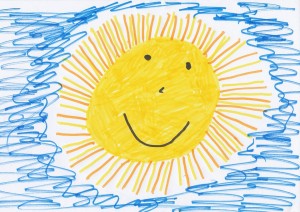January 5, 2016
Science Communication, All Communication
Posted by cbunge
Today’s post is part of a series written by student bloggers from the AGU Fall Meeting.
By: Lindsay Barbieri, PhD Student, Rubenstein School of Environment & Natural Resources, University of Vermont
At this year’s AGU Fall Meeting, I attended a session on “The Many Sides of Sharing Science: A How To,” which covered a wide variety of approaches to science communication. From children reviewing science papers, to comic book conventions, to the rock and roll music industry – we were given lively, captivating, and practical tips for communication.
Why care about science communication at all? Several sections of the population, particularly women and minorities, are not sufficiently represented in the sciences, and geosciences is one of the least representative fields. It’s been shown time and again that diversity is good for science. People perform better in teams when there is diversity in their experiences and worldviews. And successful communication is not only about making sure that everyone’s voice is heard in science: clear and exciting communication of Earth science is extremely beneficial for society as a whole. Being an Earth scientist or understanding Earth science is inherently empowering, and allows for the ability to understand the major policy decisions of our time. The more engaged and empowered citizens in the world, the better!
Building from this, the session went on to discuss and approach communication skills from a multitude of personal and practical experiences. Bronwen Konecky of Oregon State University discussed how music can communicate science through a program called Rock Camp, which uses music to make science more accessible to young girls. He explained how a musical approach helps to capture people’s attention, explain challenging concepts, and communicate to diverse audiences. There are also a lot of parallels that can be drawn between the music industry and the geoscience community, in terms of male dominated networks, safety issues, and an idea of the lifestyle possibly conflicting with family responsibilities.
Empowering girls through music, Rock Camp was a day camp where girls picked instruments, formed bands, wrote songs and performed all while being mentored and learning about women in the music industry. But Rock camp was not a just a music camp… music was a vessel for self empowerment, and the true power is in creating environments where people learn how to discover what they’re good at, unlearn social messages, practice supportive social dynamics and are able to access mentors.
Music gave way to discussing the practical ways to deal with communicating in a tense environment with people who don’t necessarily seem to share the same world view. One example used to discuss this was in finding common ground between Earth scientists and Evangelical Christians, especially where tension can spill over into the political and policy making arenas on important, global issues. Bringing it back to the basics, discussion focused on Earth based inspiration and the valuation of moral decision making, publication and citation – all things that both groups share, and the practical ways one might leverage these agreements to have fruitful and meaningful discussions.
In order to connect with a wide variety of audiences, the same message of ‘bringing it back to basics’ still applied. Keeping it simple, clear, concise and understanding what distilled message you want to convey are all critical to the design and visualization of scientific graphics and images – but also turned out to be important when communicating science to the public, as we learned from the Frontiers for Young Minds.
Frontiers for Young Minds is a non-profit which allows kids the chance to review scientific articles. “We thought we were creating a source for young readers, but actually we created a tool for researchers to become better communicators,” explained Amanda Baker. This offered many important insights into how the public might be perceiving scientific work. We learned about how audiences build mental models in order to learn something new, and that it is extremely beneficial to reduce the cognitive load of the message – without reducing the scientific content. This difference between simplifying language and simplifying content is crucial. There is no need to “dumb it down”, as most people (even children) are quite competent at understanding complex issues… it’s just the language that they can’t engage with.
Through stories of science and narrative building, learning about scientific videos and podcasts, planning for scientific conventions, working on our improvisational skills, and the important listening side of communication, this session fully engaged the group, drew us in, and imparted one final lesson that really infused all aspects of communication: People will care about what you know if they know how much you care.



